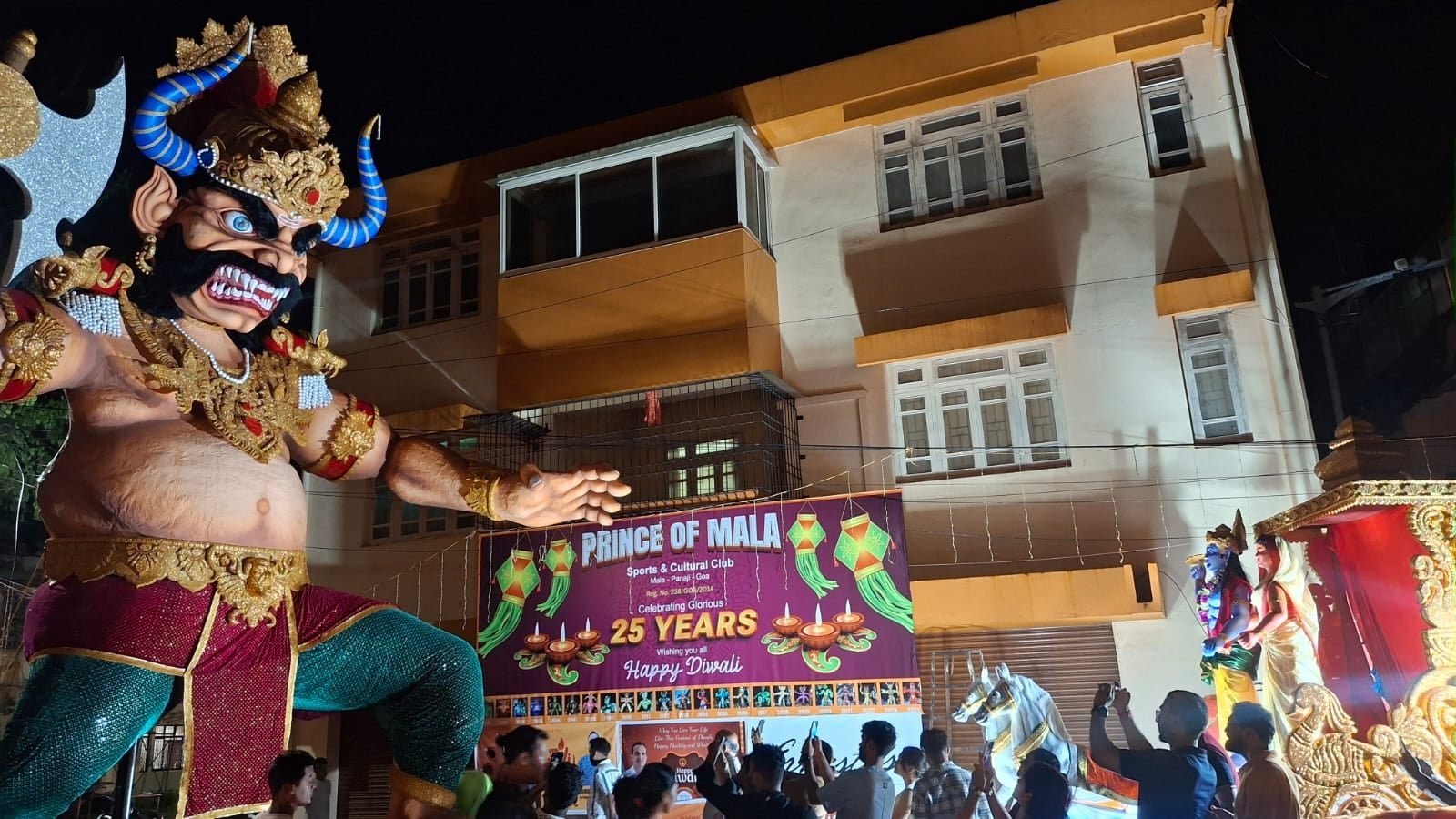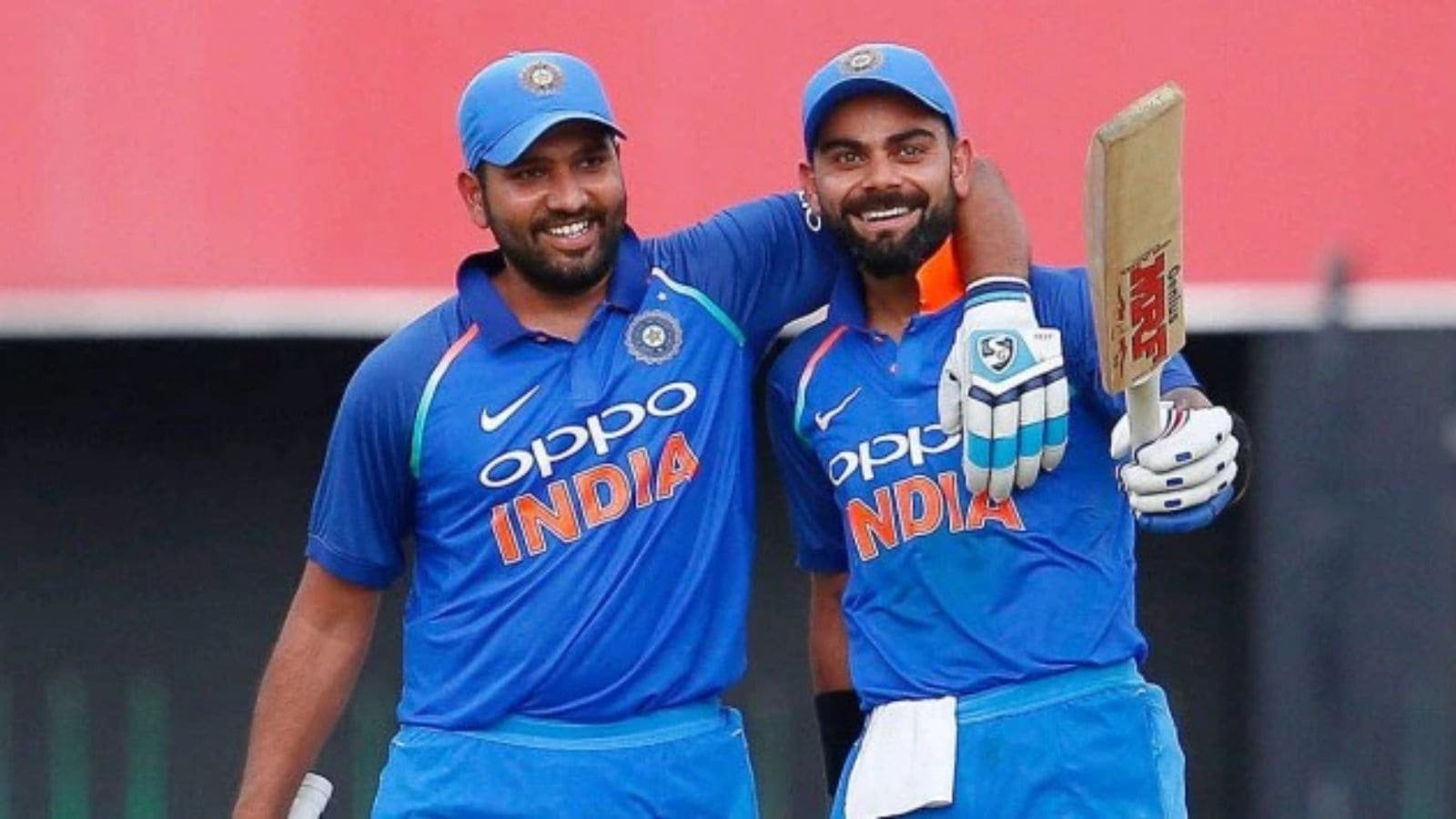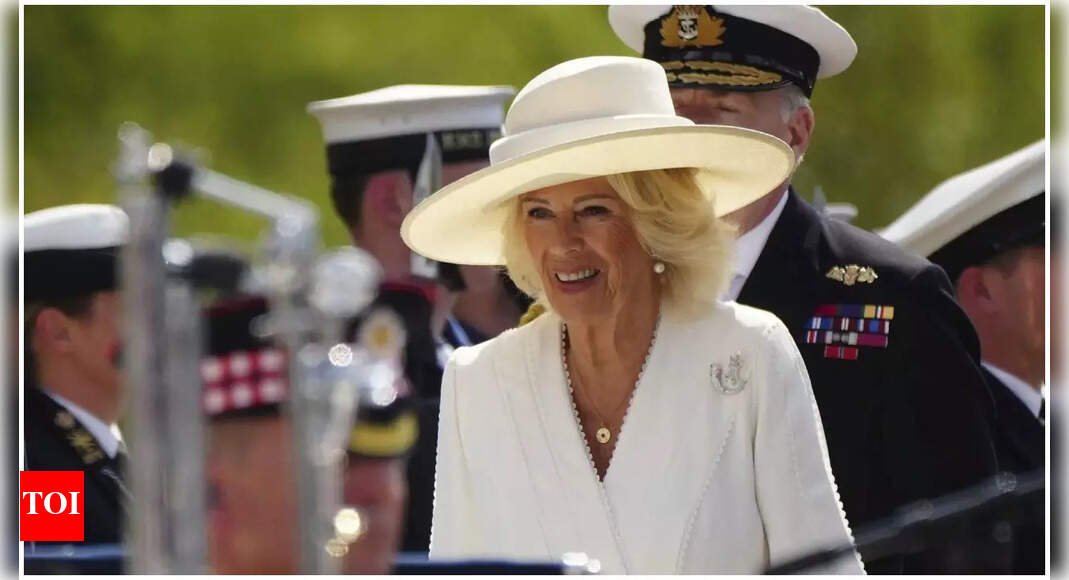In Betim’s Madla waddo, Anush Metar stands atop a makeshift platform, spray painting a 52-foot effigy of the demon king, Narakasura, late on Saturday night. For the previous two days, the Zingaro Boys — the area’s cultural group popular for making giant intricate effigies — haven’t slept, putting finishing touches to the effigy.
“Just like Ravana effigies are burnt on Dussehra in other states, we burn effigies of Narakasura on Diwali. You will find an effigy in every street. The tradition has continued for generations,” said Metar.
Starring Diwali celebrations by burning effigies of Narakasura is one of Goa’s distinct traditions. The day before Diwali is Narak Chaturdashi, which is celebrated with depictions of “Narakasura vadh” — the defeat of the Asura king by Lord Krishna.
Historian Prajal Sakhardande says that, as per legend, the land of Gomantak (an ancient name for what is now Goa) was once ruled by Narakasura, who held 16,000 women captive and let loose a reign of terror, which is believed to have caused darkness all around. People prayed to Lord Krishna for freedom from the demon king’s rule. “Lord Krishna arrived in Goa with his army. In the battle that ensued on the dark night of Amavasya, Krishna killed Narakasura and released all the women from his captivity. Those women are believed to have lit lamps to bring in light from the darkness of Narakasura’s rule,” Sakhardande said.
 At Patto in Panaji
At Patto in Panaji
With the Portuguese having suppressed local rituals, the tradition of burning Narakasura effigies had been limited to small-scale events in some villages during colonial times. It was after Goa’s 1961 liberation from Portuguese rule that the tradition gained prominence.
“I have seen effigies being made since my childhood in the 1970s. Chimbel, Mala and Betim were famous for their effigies,” Sakhardande said.
Building Narakasura
For the youth and children, it is a celebration of culture and craft. Across villages, people contribute funds and start preparation to build massive effigies of the demon king at least three weeks prior to the festival.
Story continues below this ad
Abhijit Kubal, member of the Zingaro Boys, said, “It is driven by a spirit of community. The construction process starts with assembling a frame using metal wires, iron or steel rods or bamboo sticks.
“The frame is covered with coconut coir, hay, newspaper and paper mache. The layers of paper are then glued together with a special glue made from wheat flour (maida) and milk to create the torso, arms and legs. The face is either made with mud or clay. The effigy is spray-painted using a compressor machine and decorated with thermocol and other craft materials for ornamentations. Earlier, the frame of effigies was made from bamboo. It is burnt at dawn around 5 am on Diwali,” said Kubal.
Nilesh Morojkar, a member of the Mala Millions Club and the corporator from Panaji’s Mala ward, said, “Several rituals are associated with Narakasura. After an aarti (prayer), a fruit called ‘karit’ is crushed with the toe and its bitter juice is tasted.”
 At Mala in Panaji
At Mala in Panaji
Spirit of competition
Story continues below this ad
The tradition has assumed grandeur and become commercialised in recent years. With the infusion of money and the patronage of local politicians, the effigies, with frowning demon faces and bulging muscles, now compete for lucrative cash prizes. The effigies are intricately designed around a mythical theme and aesthetic. While some are built to stand, others have hydraulic mechanisms to enact battle sequences. The budget, including sound, lighting and drone equipment, runs into lakhs of rupees in popular wards, where DJs are summoned as people dance to thumping trance and techno music.
“We have hired a DJ from Belgaum district in Karnataka. It is a night of revelry. We have requested the police to divert traffic to avoid snarls, since our effigy is quite popular,” said Kubal.
The tradition has also given rise to light-hearted rivalries.
The JJ Boys group from Kamara Bhat in Taleigao claims to have the distinction of the tallest effigy, standing at around 70 feet high. “Others will claim their effigy is the tallest, but you can see there,” said Amul Kolkar, pointing to the effigy. “We keep experimenting with designs. This year, our effigy is a demon who has been infected with a virus.”
Ganesh Pujari, a member of the Red Scorpion group in Taleigao, said, “In the past, traditional songs and drums were played, and people would dance near the effigy. This has been replaced by trance and electronic dance music in recent years. The effigy burning is followed by the bursting of crackers, unlike earlier. The tradition has morphed into a loud and garish spectacle. The effigies are getting taller every year.”




